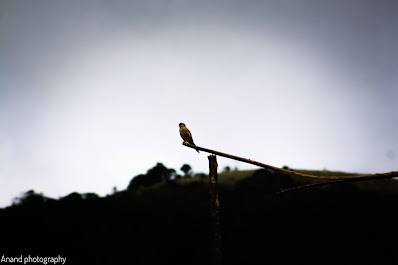Malabar Whistling Thrush
- The Malabar Whistling Thrush is a whistling thrush and they are also called as whistling schoolboy for the whistling calls that they make at dawn that have a very human quality. the species is a resident in the Western Ghats.
Kingdom : Animalia
Phylum : Chordata
Class : Aves
Order : Passeriformes
Family : Muscicapidae
Genus : Myophonus
Species : M. horsfieldii
External Morphology:
- This large thrush appears blackish with shiny patches of blue on the forehead and shoulders.
- The blue becomes visible only in oblique lighting.
- The bill and legs are black.
- Wings and tail are bluish in color.
- The sexes are indistinguishable and juveniles are more brownish and lack the blue forehead.
Distribution and Habitat:
- The species is found all along the Western Ghats. Also locally in the Eastern Ghats.
- Populations are not Migratory but have been known to disperse widely in winter.
- Malabar whistling thrushes are usually found in dark undergrowth and dense riverine forest.
Behavior and Ecology:
- The species is omnivorous ( eating a wide range of insects, crabs, frogs, earthworm and berries)
- They are usually seen singly or in pairs.
- This is bold species and its also often found close to human habitations.
- The male sings its varied and melodious whistling song from trees during summer.
- They may sing for a long time around dawn but at other times of the day they often utter sharp single or two note whistles.
- They were once popular as cage birds, with the ability to learn entire tunes.
Nesting:
- The birds breed from March - December and begins with the rainy season.
- They usually nest in a cavity on the stream side sometimes make use of nearby buildings and also nest site selection in the silent valley area on rocks along the edge of streams and in the tree hole and inside the abandoned building.
- The nest is a cup made up of moss, bamboo roots and grass, with abroad base and tapering towards the top.
- The base of the nest appeared to be cemented to the rock with mud.
- The birds show high site fidelity so that they will occupying and nesting near their previous season nests.
- The clutch consist of 2 - 4 eggs.
- The eggs are pale salmon pink with speckling.
- The eggs are "incubated for about 16 or 17 days by Both male and female.





Amazing 🔥
ReplyDelete